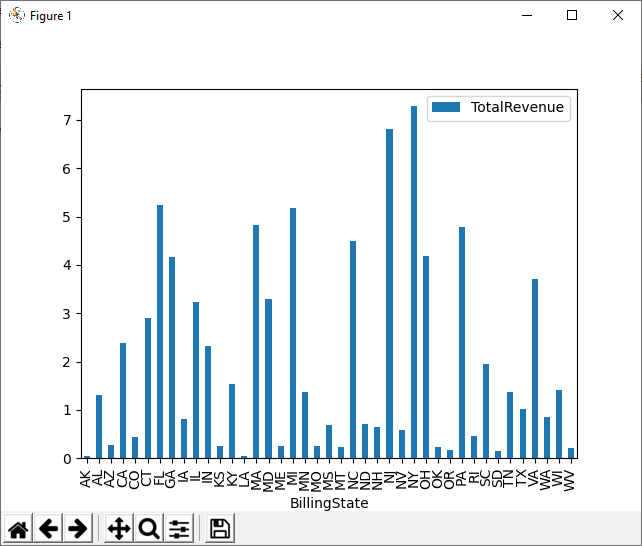Discover how a bimodal integration strategy can address the major data management challenges facing your organization today.
Get the Report →How to Visualize Bugzilla Data in Python with pandas
Use pandas and other modules to analyze and visualize live Bugzilla data in Python.
The rich ecosystem of Python modules lets you get to work quickly and integrate your systems more effectively. With the CData Python Connector for Bugzilla, the pandas & Matplotlib modules, and the SQLAlchemy toolkit, you can build Bugzilla-connected Python applications and scripts for visualizing Bugzilla data. This article shows how to use the pandas, SQLAlchemy, and Matplotlib built-in functions to connect to Bugzilla data, execute queries, and visualize the results.
With built-in optimized data processing, the CData Python Connector offers unmatched performance for interacting with live Bugzilla data in Python. When you issue complex SQL queries from Bugzilla, the driver pushes supported SQL operations, like filters and aggregations, directly to Bugzilla and utilizes the embedded SQL engine to process unsupported operations client-side (often SQL functions and JOIN operations).
Connecting to Bugzilla Data
Connecting to Bugzilla data looks just like connecting to any relational data source. Create a connection string using the required connection properties. For this article, you will pass the connection string as a parameter to the create_engine function.
You can authenticate to your Bugzilla account using two parameters:
- URL: The URL of your Bugzilla developer's page (the Home page).
- ApiKey: API Keys can be generated from the Preferences -> API Keys section of your Bugzilla developer's page.
Follow the procedure below to install the required modules and start accessing Bugzilla through Python objects.
Install Required Modules
Use the pip utility to install the pandas & Matplotlib modules and the SQLAlchemy toolkit:
pip install pandas pip install matplotlib pip install sqlalchemy
Be sure to import the module with the following:
import pandas import matplotlib.pyplot as plt from sqlalchemy import create_engine
Visualize Bugzilla Data in Python
You can now connect with a connection string. Use the create_engine function to create an Engine for working with Bugzilla data.
engine = create_engine("bugzilla:///?Url=http://yourdomain/Bugzilla&APIKey=abc123")
Execute SQL to Bugzilla
Use the read_sql function from pandas to execute any SQL statement and store the resultset in a DataFrame.
df = pandas.read_sql("SELECT Id, Summary FROM Bugs WHERE Creator = 'user@domain.com'", engine)
Visualize Bugzilla Data
With the query results stored in a DataFrame, use the plot function to build a chart to display the Bugzilla data. The show method displays the chart in a new window.
df.plot(kind="bar", x="Id", y="Summary") plt.show()

Free Trial & More Information
Download a free, 30-day trial of the CData Python Connector for Bugzilla to start building Python apps and scripts with connectivity to Bugzilla data. Reach out to our Support Team if you have any questions.
Full Source Code
import pandas
import matplotlib.pyplot as plt
from sqlalchemy import create_engin
engine = create_engine("bugzilla:///?Url=http://yourdomain/Bugzilla&APIKey=abc123")
df = pandas.read_sql("SELECT Id, Summary FROM Bugs WHERE Creator = 'user@domain.com'", engine)
df.plot(kind="bar", x="Id", y="Summary")
plt.show()






